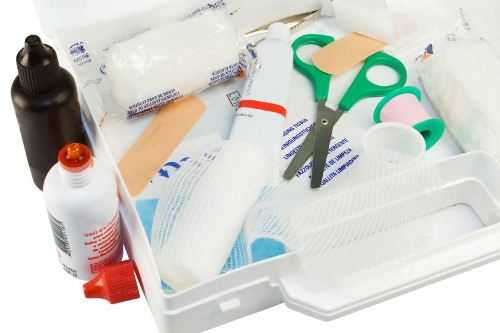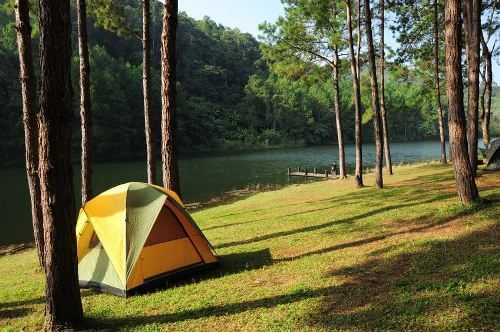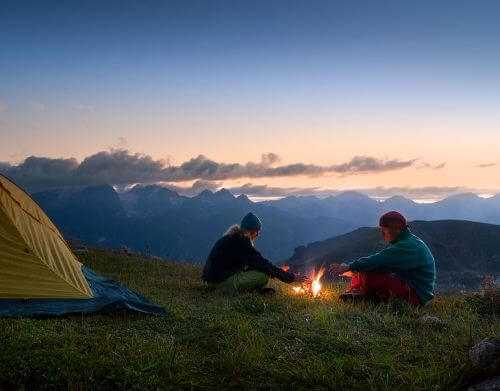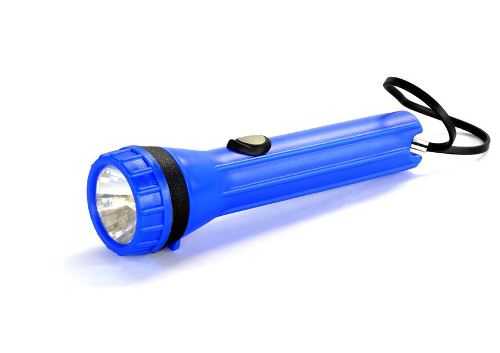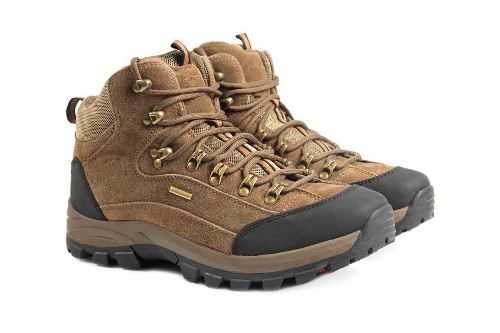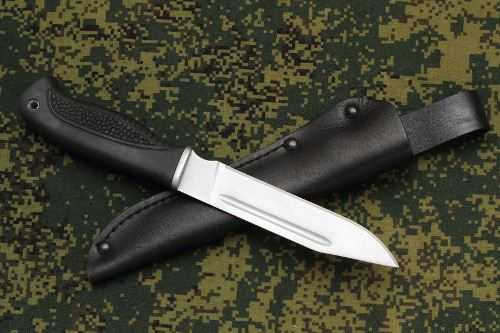In an uncertain world, being prepared could save your life. Putting together a bug-out-bag is an essential step in a good disaster preparedness plan. This bag is designed to save and maintain your life in an emergency. Every person will choose different things to pack in their bag, but there are 10 items that any survivalist should put in their pack. Here is a list of 10 essential items for any bug-out-bag.
1. Water and Purifier
It goes without saying that water is the most precious commodity in a survival situation. A person can last only 3-4 days without water. This makes water and a purification unit a must-have component of your bug-out-bag. You should have enough water in your pack to last 72 hours and it’s a big problem since big supplies of water always mean big weight. If you have to walk, carrying a couple of gallons of water can be a difficult task. Moreover, your water supplies should contain water for washing and cooking as well. Normally, a person should be supplied with 1 gallon of water per day. You may opt for a day amount of water and take a small drinking water filter for the rest. It assumes that you can find water along the way.
Boiling is another way to purify water. This is the surest method of purifying water of bacteria and microbes but only in case boiling lasts not less than 10 minutes. A simple and cheap method of purifying water is by dropping water purification tablets or drops. Let the water stand for 20 minutes before consuming and use powdered mixes to enhance the taste. If none of these methods is available, but there is a water source nearby, you can use the Earth to filter water. Dig a hole several feet from the river or lake and let it fill with water.
2. Food
Non-perishable food is another essential item in your bug-out-bag. There are three most common options for emergency food storage, which include canned foods, dehydrated foods and freeze-dried foods. Canned food can be eaten right out from the can, but it is rather heavy to carry. But most canned foods do not require cooking or heating. Most important food such as chicken, fish, beef and vegetables come in cans. Opt for low-sodium varieties to minimize the need of drinking water.
Protein bars, dried food and nuts are easy to carry and will help keep up your energy in an emergency situation. Freeze-dried foods can be re-hydrated with hot water and are a good food source for the short term. Dehydrated food, also known as MREs (meals ready to eat), is compact, fully-cooked and can be stored for many years. Moreover, it’s lightweight and very easy to tote. Be sure to count the calories: they should sum up to at least 2,000 calories per day, per person. Do not forget to include peanut butter to your kit since it’s a high-calorie product and it doesn’t require refrigeration after opening.
More: Dehydrated and Freeze-Dried Foods: Which Is Best for Backpacking?
3. First Aid
If you choose to buy a first aid kit, be sure to check the contents thoroughly and be sure the variety of items is useful and the quality is high. The other option is to make your own first aid kit and in this case you are more likely to avoid a lot of stuff you won’t need and include everything you will need a lot of. Research what common kits contain and also have a first aid guide available in your bag. When creating your own first aid kit, you need to know what it contains and how to use it.
Your first aid kit should contain OTC pain-killers, fever-reducers, anti-inflammatory meds, wound-closure strips, burn ointment, antibiotics and suture kit. Include personal items like medication and phone numbers of your doctor, hospital or other contacts. I have also developed a habit of keeping a small LTD flashlight in my first aid kit. I check the kit regularly in order to know expiration dates and I regularly replace any used or out-of-dates items and check the batteries of the flashlight. Adding an easy-to-read basic first aid instruction book is also a great idea.
4. Emergency Shelter
Some way to keep the elements at bay, be safe and get some rest. A high quality one person tent is ideal. A sleeping bag is essential for warmth and a ground tarp to keep you dry. Staying warm, dry and safe is a huge aspect of survival preparedness. Choosing a bug-out-bag shelter might be a challenging task since you should take into account things like climate, temperature ranges and level of urban development. When you live in a rural area your needs considerably differ than if you live in a mountain or urban region.
There are three main factors you should consider when choosing an emergency shelter: lightweight, materials and ease of setup. The shelter should be light in weight so that it takes little space and you can carry it over a considerable distance. Your shelter has to be simple to erect because in case of emergency you will need to go to a safer place as quickly as possible. Opt for shelters made of waterproof, breathable and solid materials and dark colors such as green, brown or in camouflage design. In any case, the shelter should be utterly easy to set up and dismantle. I carry a small, two-man tent in my bug-out-bag as it is quite light in weight and provides a lot of space so that I can keep my things inside.
5. Fire
For warmth, cooking and light, fire will help you survive. Know how to build a fire and have 3 or 4 methods of making a fire. The first way to make a fire is by using matches. Choose stormproof matches over regular matches since they can sustain many critical situations. If you decide to go with regular matches, make sure they are waterproof. You should also keep them in different places. The point is that you can lose all your supply if it’s kept in one place.
Lighters are another way to make a fire and save your life. It’s better to have several different lighters such as windproof lighter, waterproof lighter and a couple of usual gas station lighters. You can also rub two sticks together, use small magnifying lens or chemical fire starters to make a fire.
6. Rain Gear
Staying dry means staying healthy, comfortable and rested. A rain poncho, a tarp and a pull over for you backpack are essential for keeping you and your goods dry. Choosing a rain gear can be a daunting task. But a high quality rain gear is essential in your bug-out-bag. There are three main types of rain gear including water resistant, waterproof/breathable and waterproof rain gears. Softshell jackets and windbreakers are only two examples of water resistant rain gear category. They are often cheap and they will keep you dry in a light rain.
Waterproof/breathable rainwear is the most common type of rain gear and it is suitable for the wide range of uses. However, this type of clothing is much pricier than other types. Waterproof rainwear can also protect you from getting wet, but it’s completely non-breathable, which means the sweat can’t get out. They are cheap, but they are designed for minimal activity.
7. Cooking
A small pot, a collapsible or silicon cup or bowl will take up little space in your bug-out-bag and feel like a real luxury when you have hot water and food. A small backpacking stove is a must-have if you want to cook, heat the meal or just make tea. A solo stove is remarkably compact, lightweight and easy to carry. There are tens of kind of stoves and all they have their own advantages and drawbacks. It’s really difficult to choose one that will suit all the needs and situations. You should consider the following factors while choosing a stove: fuel type used, weight, speed of cooking, ease of use and fuel efficiency.
Another essential and versatile thing in your bag is a knife. You can do a lot at bay when you have nothing but a good knife. Bug-out-bag knives are designed for various purposes such as cooking, setting traps, and cutting plants. Opt for fix blade knives since they are more durable and reliable. The bigger knife doesn’t mean the better. Bear in mind that you should possess some technics to make use of the knife.
8. Light
Have several flashlights. One that runs on batteries is good if you won’t be in a survival situation long or if you have access to a stock of batteries. A better option is a solar charged or hand pump flashlight. The choice of the flashlight will depend on the specific purpose that you pursue. There is a wide-spread opinion that brighter lights are better. However, a brighter light is usually much bigger, heavier and you will have to change batteries more frequently. Moreover, with a bright flashlight it becomes very difficult to keep your location concealed if needed.
When choosing a flashlight, take into account two decisive features: lumens and candlepower. Remember that a good flashlight cannot be cheap since you always get what you pay for. But a flashlight is placed very highly on the list of your bug-out-bag items, thus, it would be very unwisely to save on it.
More: 5 Essential Items That Many Backpackers Never Think to Bring
9. Clothing
Strong, military or hiking style boots are a good choice. Long underwear for warmth and a pair of long legged pants. Avoid denim pants. They are restrictive, take hours to dry and provide little warmth. A couple pairs of socks and a few shirts should be packed. A hat is a must for protecting you from the sun, wind and rain. A bandana is also a good idea. It is a highly versatile piece of clothing and it can be used for many different things including patching clothes, protecting your neck from cold, wind and sun and even making an arm sling or tourniquet.
Your bag should contain seasonal clothes so that you are prepared for the emergency at any time. Thermal underwear is an indispensable thing if you want to stay warm in a cold season. It is the basis of your emergency wardrobe. Opt for breathable fleece to alleviate perspiration. If you prefer natural fabrics, choose wool mixed with fleece in order to avoid allergy and itching.
10. Weapons
A good survival knife will be your best friend. Do some research on the best brands and don’t go cheap. Be prepared for the situation, it may be to the point where there is no law. People are running crazy and danger is all around. Another great option you can use to protect yourself is a pepper-spray. This is a non-lethal protector that can drive away the intruder. Pepper agent irritates mucous membranes, cause temporal blindness, tearing and disorientation. The effect, however, won’t last long, but it will give you enough time to retreat or to take more definite measures.
More: 7 Ways to Take Care of Your Mental Health
Use these tips to build your own bug-out-bag and be prepared for emergencies. Survival situations will be made safer and easier if you pack your gear in advance and know exactly what is in your bag. Think of all situations you could find yourself in and what you believe you will need. Everyone’s bag is differently packed, but these 10 items are essential to your survival.




